- Home
- Virginia Woolf
Mrs. Dalloway (Annotated) Page 28
Mrs. Dalloway (Annotated) Read online
Page 28
[>] punt: Small shallow boat with two square ends, propelled by a long pole, often used for outings on rivers in Britain. Boating at Bourton seems to have been a regular activity (see 61).
[>] that Bill [178] . . . deferred effects of shell shock: An official inquiry into shell shock had been initiated by the British government’s War Office in 1920. Woolf could have read extensive details of its report, issued in 1922, in the Times.
[>] his eleven: His cricket team (composed of eleven players).
[>] “If it were now to die, twere now to be most happy”: Repeat of quotation from Othello (34).
[>] Fear no more the heat of the sun: Repeat of quotation from Cymbeline (9).
[>] “But where is Clarissa?”: The English edition has a section break before this. Woolf called for the break on a set of corrected proofs that she. sent to her friend the painter Jacques Raverat, who was dying from multiple sclerosis. (This set is now in the Department of Special Collections, University Research Library, University of California, Los Angeles.) She did not call for the break on the proofs she corrected for her American publisher (now in the Lilly Library at Indiana University).
[>] Emily Brontë: English poet and author of the novel Wuthering Heights (1847).
[>] in red: Elizabeth’s dress is described by Lucy, Ellie, and Richard as pink (162, 165, 189).
[>] Suez Canal: Canal in Egypt connecting the Mediterranean and Red Seas, constructed 1859–69. It was largely controlled by the British, giving them economic and strategic power in the region (1875–1956). From her own travels and her interest in plants, Vita Sackville-West could have informed Woolf of rare lilies native to the area.
[>] fifty-two to be precise: Peter may have been more “precise” when he registered his age at fifty-three, earlier in the novel (77).
SUGGESTIONS FOR FURTHER READING: Virginia Woolf
Editions
The Complete Shorter Fiction. Edited by Susan Dick. 2nd ed. San Diego: Harcourt, 1989.
The Diary of Virginia Woolf. Edited by Anne Olivier Bell. 5 vols. New York: Harcourt, 1977–84.
The Essays of Virginia Woolf. Edited by Andrew McNeillie. 6 vols. [in progress], San Diego: Harcourt Brace Jovanovich, 1986–.
The Letters of Virginia Woolf Edited by Nigel Nicolson and Joanne Trautmann. 6 vols. New York: Harcourt Brace Jovanovich, 1975–80.
Moments of Being. Edited by Jeanne Schulkind. San Diego: Harcourt, 1985.
A Passionate Apprentice: The Early Journals, 1897–1909. Edited by Mitchell A. Leaska. San Diego: Harcourt, 1990.
Biographies and Reference Works
Briggs, Julia. Virginia Woolf: An Inner Life. San Diego: Harcourt, 2005.
Hussey, Mark. Virginia Woolf A to Z: A Comprehensive Reference for Students, Teachers, and Common Readers to Her Life, Works, and Critical Reception. New York: Facts on File, 1995.
Kirkpatrick, B. J., and Stuart N. Clarke. A Bibliography of Virginia Woolf. 4th ed. Oxford: Clarendon, 1997.
Lee, Hermione. Virginia Woolf New York: Knopf, 1996.
Marder, Herbert. The Measure of Life: Virginia Woolf’s Last Years. Ithaca, NY: Cornell University Press, 2000.
Poole, Roger. The Unknown Virginia Woolf 4th ed. Cambridge: Cambridge University Press, 1995.
Reid, Panthea. Art and Alffection: A Life of Virginia Woolf. New York: Oxford University Press, 1996.
General Criticism
Abel, Elizabeth. Virginia Woolf and the Fictions of Psychoanalysis. Chicago: University of Chicago Press, 1989.
Bazin, Nancy Topping. Virginia Woolf and the Androgynous Vision. New Brunswick, NJ: Rutgers University Press, 1973.
Beer, Gillian. Virginia Woolf: The Common Ground. Ann Arbor: University of Michigan Press, 1996.
Cuddy-Keane, Melba. Virginia Woolf, the Intellectual, and the Public Sphere. Cambridge: Cambridge University Press, 2003.
DiBattista, Maria. Virginia Woolf’s Major Novels: The Fables of Anon. New Haven, CT: Yale University Press, 1980.
Fleishman, Avrom. Virginia Woolf: A Critical Reading. Baltimore: Johns Hopkins University Press, 1975.
Froula, Christine. Virginia Woolf and the Bloomsbury Avant-Garde: War, Civilisation, Modernity. New York: Columbia University Press, 2005.
Guiguet, Jean. Virginia Woolf and Her Works. New York: Harcourt Brace Jovanovich, 1965.
Harper, Howard. Between Language and Silence: The Novels of Virginia Woolf. Baton Rouge: Louisiana State University Press, 1982.
Hussey, Mark. The Singing of the Real World: The Philosophy of Virginia Woolf‘s Fiction. Columbus: Ohio State University Press, 1986.
——, ed. Virginia Woolf and War: Fiction, Reality and Myth. Syracuse, NY: Syracuse University Press, 1991.
Majumdar, Robin, and Allen McLaurin, eds. Virginia Woolf: The Critical Heritage. Boston: Routledge, 1975.
Marcus, Jane. Art and Anger: Reading Like a Woman. Columbus: Ohio State University Press, 1988.
———, ed. New Feminist Essays on Virginia Woolf. Lincoln: University of Nebraska Press, 1981.
———, ed. Virginia Woolf: A Feminist Slant. Lincoln: University of Nebraska Press, 1983.
———, ed. Virginia Woolf and Bloomsbury: A Centenary Celebration. Bloomington: Indiana University Press, 1987.
———. Virginia Woolf and the Languages of Patriarchy. Bloomington: Indiana University Press, 1987.
McLaurin, Allen. Virginia Woolf: The Echoes Enslaved. Cambridge: Cambridge University Press, 1973.
McNees, Eleanor, ed. Virginia Woolf: Critical Assessments. 4 vols. New York: Roudedge, 1994.
Minow-Pinkney, Makiko. Virginia Woolf and the Problem of the Subject: Feminine Writing in the Major Novels. New Brunswick, NJ: Rutgers University Press, 1987.
Phillips, Kathy J. Virginia Woolf Against Empire. Knoxville: University of Tennessee Press, 1994.
Roe, Sue, and Susan Sellers, eds. The Cambridge Companion to Virginia Woolf. Cambridge: Cambridge University Press, 2000.
Ruotolo, Lucio. The Interrupted Moment: A View of Virginia Woolf’s Novels. Stanford, CA: Stanford University Press, 1986.
Silver, Brenda R. Virginia Woolf Icon. Chicago: University of Chicago Press, 1999.
Zwerdling, Alex. Virginia Woolf and the Real World. Berkeley: University of California Press, 1986.
SUGGESTIONS FOR FURTHER READING: Mrs. Dalloway
(in addition to the works cited in the introduction)
Barrett, Eileen. “Unmasking Lesbian Passion: The Inverted World of Mrs. Dalloway.” In Virginia Woolf: Lesbian Readings. Edited by Eileen Barrett and Patricia Cramer, 146–64. New York: New York University Press, 1997.
Bishop, Edward. “Writing, Speech, and Silence in Mrs. Dalloway.” English Studies in Canada 12.4 (December 1986): 397–423.
Bloom, Harold, ed. Clarissa Dalloway. Major Literary Characters Series. New York: Chelsea House, 1990.
Bradshaw, David. ‘“Vanished, Like Leaves’: The Military, Elegy and Italy in Mrs. Dalloway.” Woolf Studies Annual 8 (2002): 107–25.
Cunningham, Michael. The Hours. New York: Farrar, Straus and Giroux, 1998.
Edwards, Lee R. “War and Roses: The Politics of Mrs. Dalloway” In The Authority of Experience: Essays in Feminist Criticism. Edited by Arlyn Diamond and Lee R. Edwards, 161–77. Amherst: University of Massachusetts Press, 1977.
Froula, Christine. “Mrs. Dalloway’s Postwar Elegy: Women, War, and the Art of Mourning.” Modernism/Modernity 9.1 (2002): 125–63.
Henke, Suzette. “Mrs. Dalloway. The Communion of Saints.” In New Feminist Essays on Virginia Woolf. Edited by Jane Marcus, 125–47. Lincoln: University of Nebraska Press, 1981.
Hoffmann, Charles G. “From Short Story to Novel: The Manuscript Revisions of Virginia Woolf’s Mrs. Dalloway.” Modern Fiction Studies 14.2 (Summer 1968): 171–86.
Jamison, Kay R. Touched with Fire: Manic Depressive Illness and the Artistic Temperament. New York: Free Press, 1993.
Lippincott, Robin. Mr. Dalloway: A Novella. Louisville, KY: Sarabande Books, 1999.
Low, Lisa. “‘Thou Canst Not Touch the Freedom of My Mind’: Fascism and Disruptive Female Consciousness in Mrs. Dalloway.” In Virginia Woolf and Fascism. Edited by Merry M. Pawlowski, 92–104. Houndmills, UK: Palgrave, 2001.
Miller, J. Hillis. Fiction and Repetition: Seven English Novels. Cambridge, MA: Harvard University Press, 1982.
Prose, Francine, ed. The Mrs. Dalloway Reader. By Virginia Woolf et al. Orlando: Harcourt, 2003.
Richter, Harvena. “The Ulysses Connection: Clarissa Dalloway’s Bloomsday.” Studies in the Novel 21.3 (Fall 1989): 305–19.
Scott, Bonnie Kime. Refiguring Modernism. 2 vols. Bloomington: Indiana University Press, 1995.
Squier, Susan. Virginia Woolf and London. Chapel Hill: University of North Carolina Press, 1985.
Tate, Trudi. “Mrs Dalloway and the Armenian Question.” Textual Practice 8.3 (Winter 1994): 467–86.
Thomas, Sue. “Virginia Woolf’s Septimus Smith and Contemporary Perceptions of Shell Shock.” English Language Notes 25.2 (December 1987): 49–57.
Wicke, Jennifer. “Mrs. Dalloway Goes to Market: Woolf, Keynes, and Modern Markets.” Novel: A Forum with Fiction 28.1 (Fall 1994): 5–23.
Woolf, Virginia. Mrs Dalloway. Edited by Morris Beja. Oxford: Shakespeare Head/Blackwell, 1996.
———. Mrs. Dalloway’s Party: A Short Story Sequence by Virginia Woolf. Edited by Stella McNichol. New York: Harcourt Brace Jovanovich, 1973.
———. “Modern Novels.” In The Essays of Virginia Woolf. Edited by Andrew McNeillie. Vol. 3, 30–37. San Diego: Harcourt Brace Jovanovich, 1986.
Wright, G. Patton. Appendix I: List of Textual Variants in Mrs. Dalloway by Virginia Woolf. Edited by G. Patton Wright. The Definitive Collected Edition. London: Hogarth Press, 1990.
Films
The Hours. Produced by Scott Rudin and Robert Fox. Directed by Stephen Daldry. Screenplay by David Hare. Paramount Pictures and Miramax Films, 2002.
Virginia Woolf’s Mrs. Dalloway. Produced by Lisa Katselas Paré and Stephen Bayly. Directed by Marleen Gorris. Screenplay by Eileen Atkins. First Look Pictures, 1999.
About the Author
VIRGINIA WOOLF (1882–1941), one of the major literary figures of the twentieth century, transformed the art of fiction. The author of numerous novels, collections of letters, journals, and short stories, she was also an admired literary critic and a master of the essay form.
MARK HUSSEY, general editor of Harcourt’s annotated Woolf series, is professor of English at Pace University in New York City and editor of Woolf Studies Annual.
BONNIE KIME SCOTT is professor of women’s studies at San Diego State University. She is the author of books on modernism, James Joyce, and Rebecca West.
Footnotes
1 Woolf’s early diary is published as A Passionate Apprentice: The Early Journals 1897–1909, edited by Mitchell A. Leaska. A 1909 notebook discovered in 2002 has been published as Carlyle’s House and Other Sketches, edited by David Bradshaw (London: Hesperus, 2003).
[back]
***
1 Woolf composed this introduction for a 1928 edition of her novel published by Random House for the Modern Library of the World’s Best Books edition. It is the only commentary of its sort that she wrote for any of her works.
[back]
***
2 Having found that evidence from actual newspaper accounts does not correspond to what is in newspaper accounts of cricket matches read by characters in the novel, David Bradshaw argues that Mrs. Dalloway is set on an imaginary Wednesday in mid-June 1923 (182–83). Arguments for the actual dates of June 13 and June 20 have been made by Harvena Richter and Morris Beja, respectively.
[back]
***
3 Woolf refers here to one of three “Lives of the Obscure,” published in the American edition of The Common Reader. “Miss Ormerod” is an imaginative rendering of scenes from the life of Eleanor Ormerod, a specialist on destructive insects.
[back]

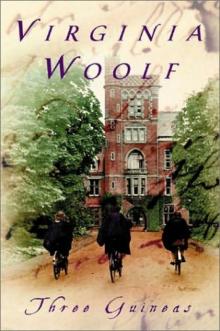 Three Guineas
Three Guineas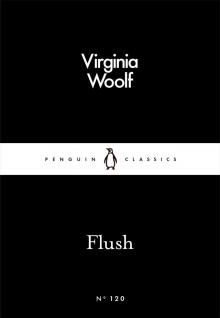 Flush
Flush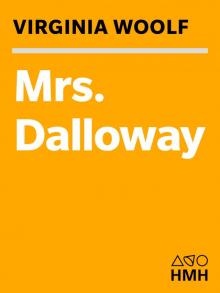 Mrs. Dalloway
Mrs. Dalloway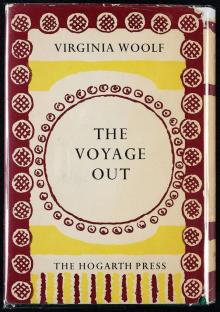 The Voyage Out
The Voyage Out A Writer's Diary: Being Extracts From the Diary of Virginia Woolf
A Writer's Diary: Being Extracts From the Diary of Virginia Woolf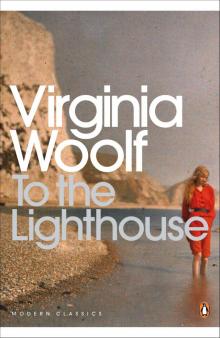 To The Lighthouse
To The Lighthouse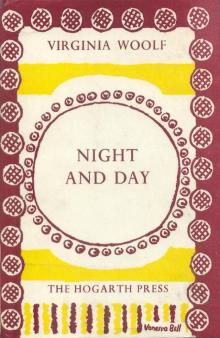 Night and Day
Night and Day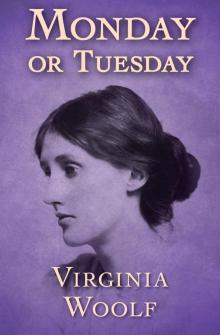 Monday or Tuesday
Monday or Tuesday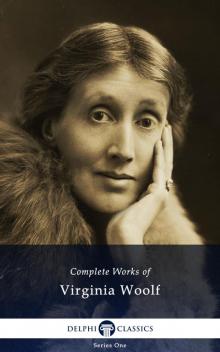 Complete Works of Virginia Woolf
Complete Works of Virginia Woolf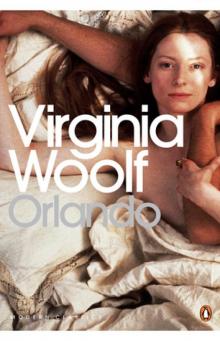 Orlando
Orlando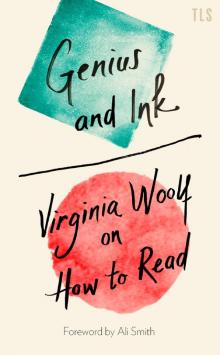 Genius and Ink
Genius and Ink Mrs. Dalloway (Annotated)
Mrs. Dalloway (Annotated)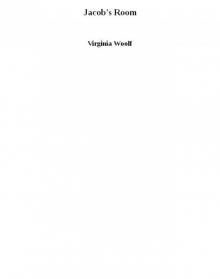 Jacob's Room
Jacob's Room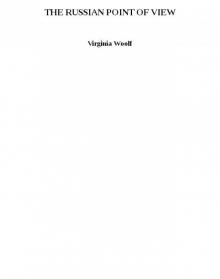 THE RUSSIAN POINT OF VIEW
THE RUSSIAN POINT OF VIEW A Writer's Diary
A Writer's Diary Woolf Short Stories
Woolf Short Stories